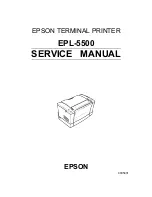
Here is the way to adjust the width when it is the only problem. Tell
the computer that the print line is wider than 80 characters with this
WIDTH statement:
WIDTH "LPTl:",
255
The 255 is a special number that prevents the computer system from
inserting a CR-LF into the line-unless, of course, there’s one in your
program.
The extra line feed—CHR$(l0)—that accompanies each carriage
return—CHR$(13)—d oes not cause a problem unless you need to use
CHR$(13) in a graphics program. Getting rid of the extra CHR$(l0) is
rather complicated. First you open the printer as a random file:
OPEN "LPTl:" AS #l
Although this allows you to send any code to the printer, you can no
longer use the LPRINT command. Instead, you must use a PRINT #1
command:
PRINT #l, "Now I
can print anything”
This does allow you to print anything, but it ignores any previous
WIDTH statement.
If you want to print more than 80 characters per line in a graphics
program, you must change your opening statement to include the
appropriate WIDTH statement:
OPEN "LPTl:" AS #l : WIDTH #l, 255
And for the programs in this manual, don’t forget to use PRINT #l
wherever you see LPRINT
Maintaining Your Printer
Always keep the printer in a clean and safe place. Keep it away from
dust, grease, moisture and any source of heat, including direct sunlight.
A safe temperature range is 40° F to 95° F (5” C to 35° C).
If the outer case is dirty, clean it with a soft, clean cloth dampened
with mild detergent dissolved in water. Keep the printer lid in place to
prevent any water from getting inside the printer. Do not use a hard
Problem Solving and Maintenance
C-9
















































